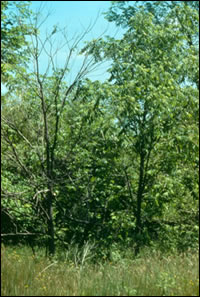
Butternut canker (Ophiognomonia clavigignenti-juglandacearum) is a fungal disease which can infect and kill healthy trees as well as those that are injured or stressed.
A newly infected tree does not exhibit any obvious symptoms until the disease begins to colonize and kill the inner bark. It is believed that butternut trees are infected through buds, leaf scars, and insect wounds or other openings in the bark. As the disease progresses throughout, branch dieback becomes visible.
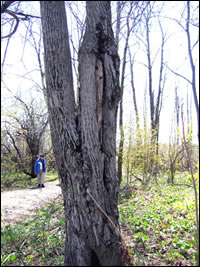 The disease proceeds to kill patches of the bark in areas known as cankers. They will eventually encircle branches and stems and cut off the flow of water and nutrients within the tree. As the number of infected sites on the tree increases, crown die-back accelerates. Heavily infected trees rarely outgrow the infections.
The disease proceeds to kill patches of the bark in areas known as cankers. They will eventually encircle branches and stems and cut off the flow of water and nutrients within the tree. As the number of infected sites on the tree increases, crown die-back accelerates. Heavily infected trees rarely outgrow the infections.
The fungus begins in the lower crown of the tree, in the shade and protection of the canopy. The spores are tightly held in a jelly-like substance that oozes from the bark, and are only released by forces such as strong wind and rain. It is believed that the spores are transmitted to the rest of the tree in tiny water droplets produced during heavy downpours.
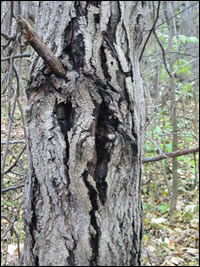 Once the disease has established itself in the crown, basal cankers can usually be found on the main stem near the ground. Large cankers are target-like in appearance because of the alternating callus growth and fungal damage on the same lesion. It is the coalescing of numerous cankers that girdle the twig, branch, or stem and eventually kill the tree. However, despite the fast progression of this disease, the cankers may still take many years to kill a large tree.
Once the disease has established itself in the crown, basal cankers can usually be found on the main stem near the ground. Large cankers are target-like in appearance because of the alternating callus growth and fungal damage on the same lesion. It is the coalescing of numerous cankers that girdle the twig, branch, or stem and eventually kill the tree. However, despite the fast progression of this disease, the cankers may still take many years to kill a large tree.
A common response associated with this disease is epicormic branching (the formation of shoots along the trunk of a tree caused by injury or disease). These emanate from the callus tissue around the edge of the canker, and do not survive for very long—succumbing early themselves to the effects of the disease.
Signs and Symptoms
Some of the common signs and symptoms of the butternut canker include:
- dying branches in the upper, sunlit crown (shaded branches die off normally)
- sunken, elongated, diamond-shaped cankers, dark brown to black in colour, found on the branches or the stem
- older cankers may show successive rings of callus loosely covered with shredded bark
- in spring, a thin black fluid oozes from cracks in the bark
- in summer, fall and winter, the black fluid leaves a dried sooty stain on the outside of the bark at the canker site
- underneath the bark, the wood is stained dark brown to black in a diamond shape
- epicormic branching below dead or infected areas on stem or branches
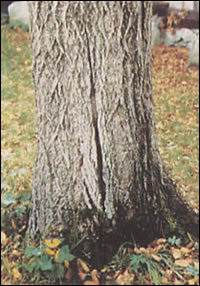 Canker on trunk |
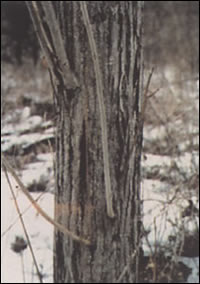 Epicormic branching |
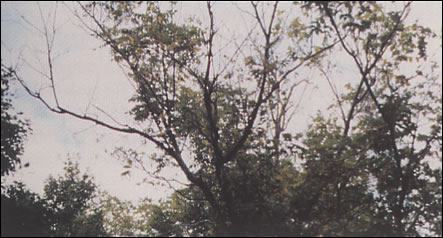 Crown dieback due to canker infection |
|
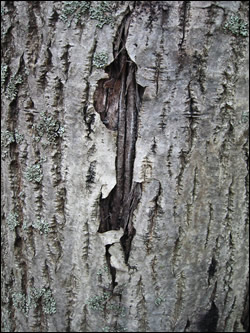 Recent canker on trunk |
 Mature butternut canker |